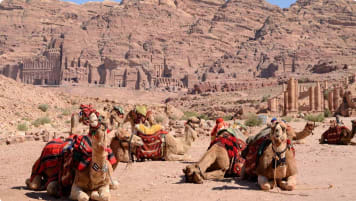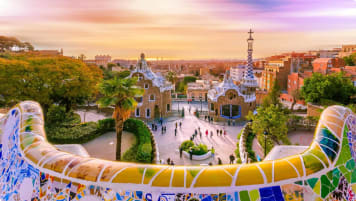Al-Andalus: History of Islamic Spain
The Moors feature in the history of Spain. This article explains the contribution of Islam to the its history. An Antipodean travel company serving World Travellers since 1983 with small group educational tours for senior couples and mature solo travellers.
12 Jan 23 · 9 mins read
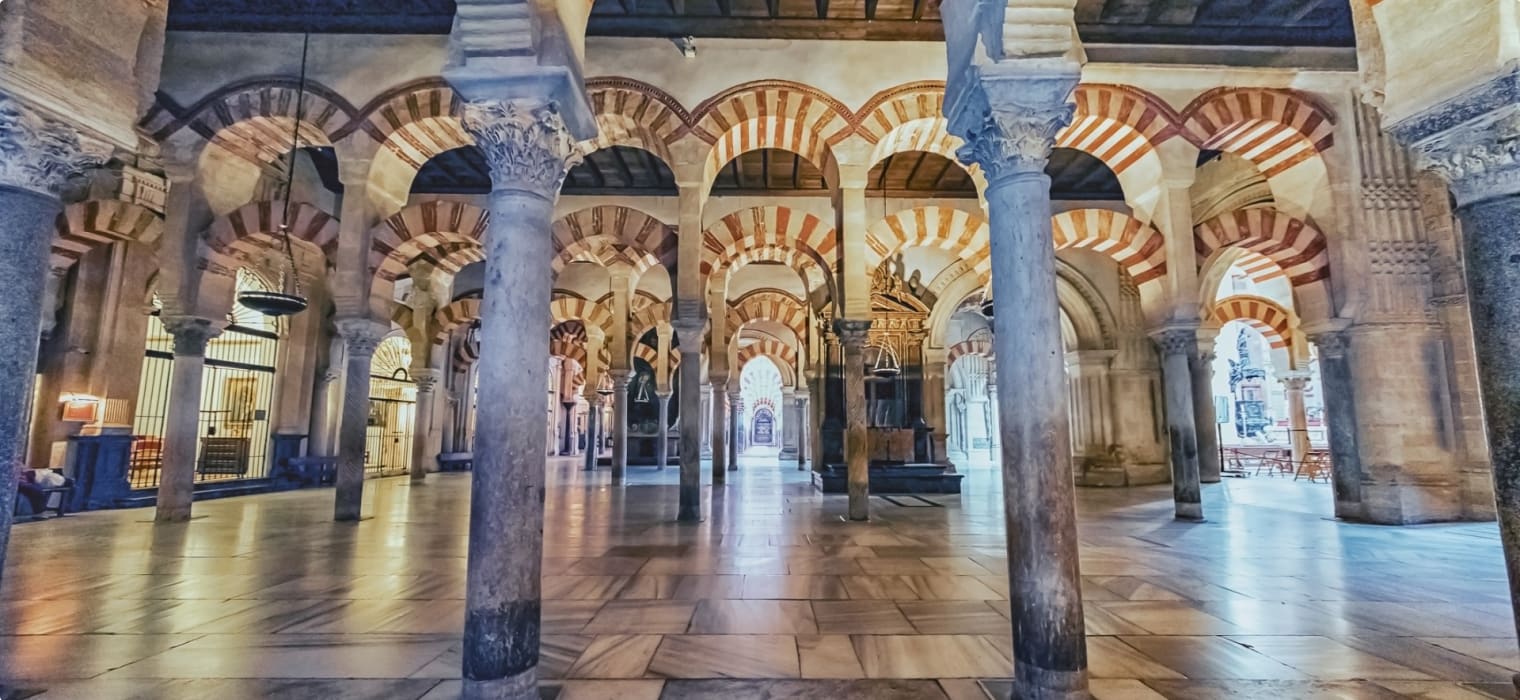
Al-Andalus: History of Islamic Spain
In 711 CE, Muslim forces conquered the Iberian Peninsula (modern-day Spain and Portugal), establishing a rule that lasted for over seven centuries. The Moors, as the Muslims were known, developed Al-Andalus, a society renowned for its prosperity and influence, boasting extensive libraries, schools, and public baths. They made significant contributions to European culture through literature, poetry, and architecture, fostering a harmonious coexistence among people of different faiths.
The pinnacle of Al-Andalus was reached during the 10th century under the Umayyad caliphate based in Cordoba, holding sway over most of the Iberian Peninsula. Subsequently, following setbacks in 1086, the Moors retreated south but maintained control over southern Spain, ruling from various kingdoms for another four centuries. Their ultimate defeat came in 1492 with the fall of Granada, to the Catholic Monarchs, Isabella I of Castile and Ferdinand II of Aragon.
The aftermath witnessed a systematic expulsion of Muslims from Spain, marked by persecution and the destruction of numerous Arabic texts. The illustrious Islamic civilization that thrived in Spain for centuries met its demise. Despite this, the enduring cultural legacy of Spain’s Muslim past continues to shape its heritage.
This article delves into the history of Muslim governance in Al-Andalus, drawing insights from the documentary Cities of Light: The Rise and Fall of Islamic Spain. It serves as preparatory material for Odyssey Traveller’s Moors in Spain Tour, offering a comprehensive exploration of the art, architecture, culture, and religious influence of the Moors in Spain. Participants of this tour will visit key cities such as Madrid, Toledo, and Seville, among others in Andalusia, to unravel the captivating narrative of Islamic Spain. Explore further to uncover the enthralling history of this remarkable era.
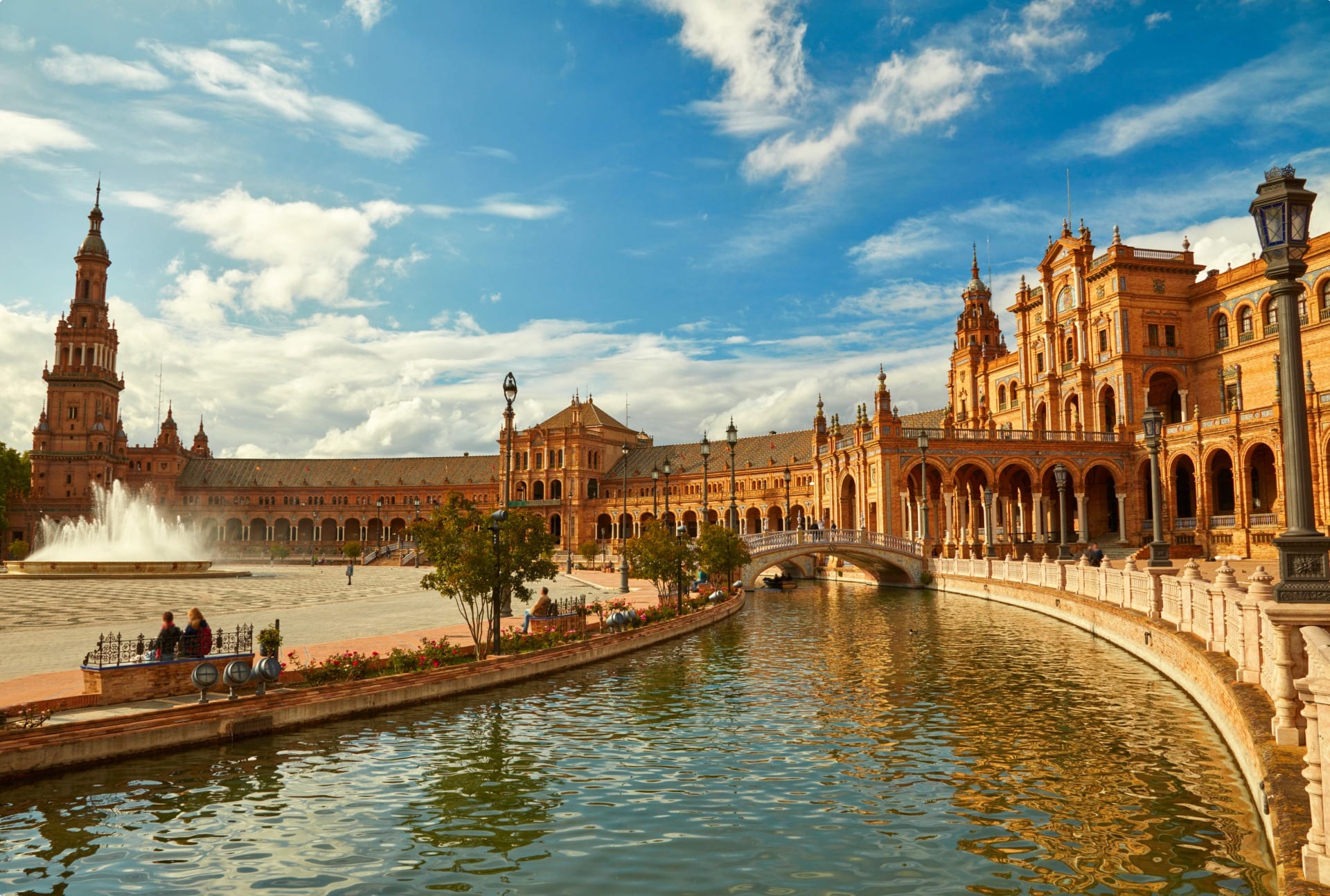
Muslim Conquest
The Muslim conquest of Spain was a pivotal part of the broader expansion of the Umayyad Caliphate during the 7th and 8th centuries. In the aftermath of Prophet Muhammad’s passing in 632, Arab armies swiftly advanced east into Persia and west into Egypt, Jordan, and North Africa, nearing the borders of Europe. This era coincided with Europe’s Dark Ages, following the decline of Rome and leaving the continent fragmented and defenceless amid tribal conflicts.
The Islamic forces strategically targeted the vulnerable European territories, converting Berber troops in North Africa and amassing troops along the coast by the early 8th century. In a bold move in July 711, General Ṭāriq ibn Ziyād led 7000 Berber tribesmen across the Straits of Gibraltar, initiating the invasion of Europe. Motivated by territorial expansion and a plea for assistance from the Wittizans, a Visigothic faction in Spain, against their oppressive ruler Roderick, the Muslims swiftly overpowered the Visigoth army, culminating in the fall of Roderick and the conquest of most of Spain and Portugal by 714.
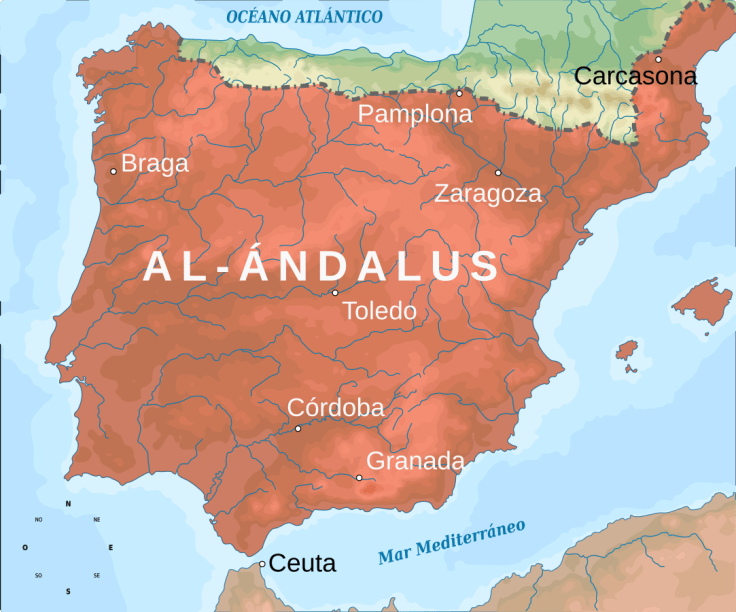
The Muslim expansion extended north of the Pyrenees Mountains, disrupting southern Gaul, until the Franks, led by Charles Martel, halted their advancement in Poitiers. Subsequently, Islamic dominance focused on the Iberian Peninsula south of the Pyrenees. The period from 711 to 756 was characterized as the dependent emirate, with Al-Andalus, or Muslim Spain, remaining under the influence of the Umayyad caliphate in Damascus.
The Muslims were often embraced as liberators from Visigothic oppression, offering lenient surrender terms and beneficial conditions to encourage conversion to Islam, even granting elevated status to those who converted. Despite these efforts, establishing a unified Muslim state proved challenging, given the diverse nationalities within the ruling Islamic factions, leading to internal strife and social tensions during this period.
The Umayyad Dynasty
Stability in Spain began with the establishment of an independent kingdom, the Emirate of Cordoba, under the Umayyad dynasty in 756 by Abd al Rahman. He, an Umayyad prince who sought refuge in Spain after his family’s overthrow and massacre in Damascus, revolutionized the city of Cordoba upon his arrival. Introducing advanced irrigation techniques and a new trade system, Abd al Rahman transformed the landscape with crops like palm trees, lemons, olives, artichokes, avocados, and pomegranates, paving the way for prosperity.
Under his rule, Cordoba blossomed into a cosmopolitan hub with a population exceeding 100,000, making it the largest settlement in Europe at the time. The city became a beacon of culture and knowledge, boasting an impressive array of 70 libraries, 700 mosques, and over 3000 public baths. Remarkably, Cordoba featured houses with running water, illuminated by oil lanterns, showcasing an advanced civilization.
The crowning glory of Cordoba was the grand mosque, a magnificent architectural feat with a vast floor space equivalent to four football pitches. Adorned with a forest of 600 marble columns and mesmerizing arches creating an infinity effect, the mosque’s acoustics were exceptional. Cordoba evolved into Europe’s most flourishing and hygienic city, equipped with a robust central administration, medical facilities, a well-structured legal system, and a plethora of scholars pioneering advancements in various fields like literature, poetry, astronomy, mathematics, art, and architecture.

The period also witnessed rapid growth in the Muslim population of Spain, with indigenous inhabitants embracing Islam willingly due to the perceived benefits it offered in terms of wealth, social status, and intellectual growth. While Islamization was prevalent, the Muslim rulers recognized the importance of the Jewish and Christian communities for a harmonious society. These religious groups were treated relatively well, given they acknowledged Islamic authority, adhered to certain regulations, and paid specified taxes, fostering a diverse and cooperative environment.
In 929, Abd al-Rahman III elevated Cordoba’s status by declaring himself a caliph, positioning the city as a significant player alongside Baghdad. This decision escalated Cordoba’s cultural and trade influence, leading to the construction of architectural wonders across Al-Andalus. However, the focus on cultural development overshadowed military concerns, resulting in recruitment of foreign mercenaries and internal power struggles, culminating in civil strife and the eventual fragmentation of the caliphate into several independent Muslim realms by the early 11th century.
As a consequence, multiple vibrant Muslim city-states emerged in the Iberian Peninsula, each striving for supremacy and cultural eminence, signifying a period of transition and diversification in Al-Andalus’s political landscape.
The Reconquista
The collapse of the Caliphate facilitated the Christian Reconquista’s gradual encroachment on Islamic rule in the Iberian Peninsula. This protracted conflict saw the northern Catholic kingdoms of Spain systematically overcome and subjugate the Muslim city-states in the region.
In a pivotal turn of events, the Catholic powers seized the significant Islamic stronghold of Toledo in 1085. In response, the Muslims, bolstered by Almoravid forces from Morocco under General Yusuf ibn Tashfin, retaliated fiercely. The Almoravids, known for their militant Islamic fervor and formidable military prowess, decisively defeated the Catholics in 1086, leveraging their cavalry comprising swift horses, camels, and even elephants.
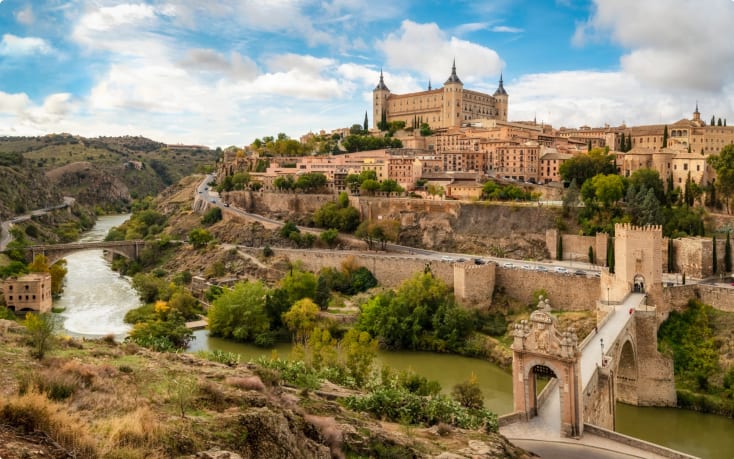
Following their victory, Yusuf and the Almoravids reasserted Muslim control over much of Al-Andalus. However, upon their arrival, they were appalled by what they perceived as cultural decadence among the populace, prompting them to impose a strict fundamentalist Islamic regime from Marrakesh, aiming to purify a society they deemed too influenced by civilization, science, and interactions with Christians and Jews.
Consequently, the Muslim states found themselves caught between aggressive Christian adversaries and oppressive fundamentalist Muslim rulers. This predicament triggered numerous uprisings across Al-Andalus against Almoravid rule, leading to internal strife that weakened their capacity to fend off Catholic incursions. Substantial rebellions in 1144 and 1145 fractured Islamic unity, resulting in the emergence of independent statelets and a renewed plea for assistance from the Maghreb.
In response to the turmoil, the Almohads intervened in 1145, embarking on a quest to reestablish unity in Al-Andalus. However, their rule proved even more rigid and intolerant towards Christians and Jews than that of the Almoravids, advocating for forced conversion to Islam or expulsion from Al-Andalus, prompting an exodus towards the Catholic realms to the north.
The zenith of Almohad supremacy came in 1195 with the resounding defeat of Alfonso VIII of Castile at Alarcos. Nevertheless, this defeat only fueled Alfonso’s determination to expel Muslims from Spain, culminating in the papal endorsement of a crusade in Spain by Celestine III in 1197 and later reinforced by Innocent III in 1206. These religious proclamations injected an ideological fervor into the Reconquista, transforming it from a mere territorial and power struggle into a religiously charged campaign.
In retaliation, a coalition of Catholic forces from France, Italy, Aragon, and Navarre allied with Castile to decisively vanquish the Almohads at the Battle of Las Navas de Tolosa in 1212. This marked the beginning of the end for the Almohads, who gradually lost control of Al-Andalus to the advancing Catholic kingdoms in the ensuing decades, surrendering key cities like Valencia, Murcia, Badajoz, Mérida, and ultimately, Seville in 1248. By 1250, only the kingdom of Granada, guarding a narrow strip along the southern Iberian coast, remained under Muslim rule.
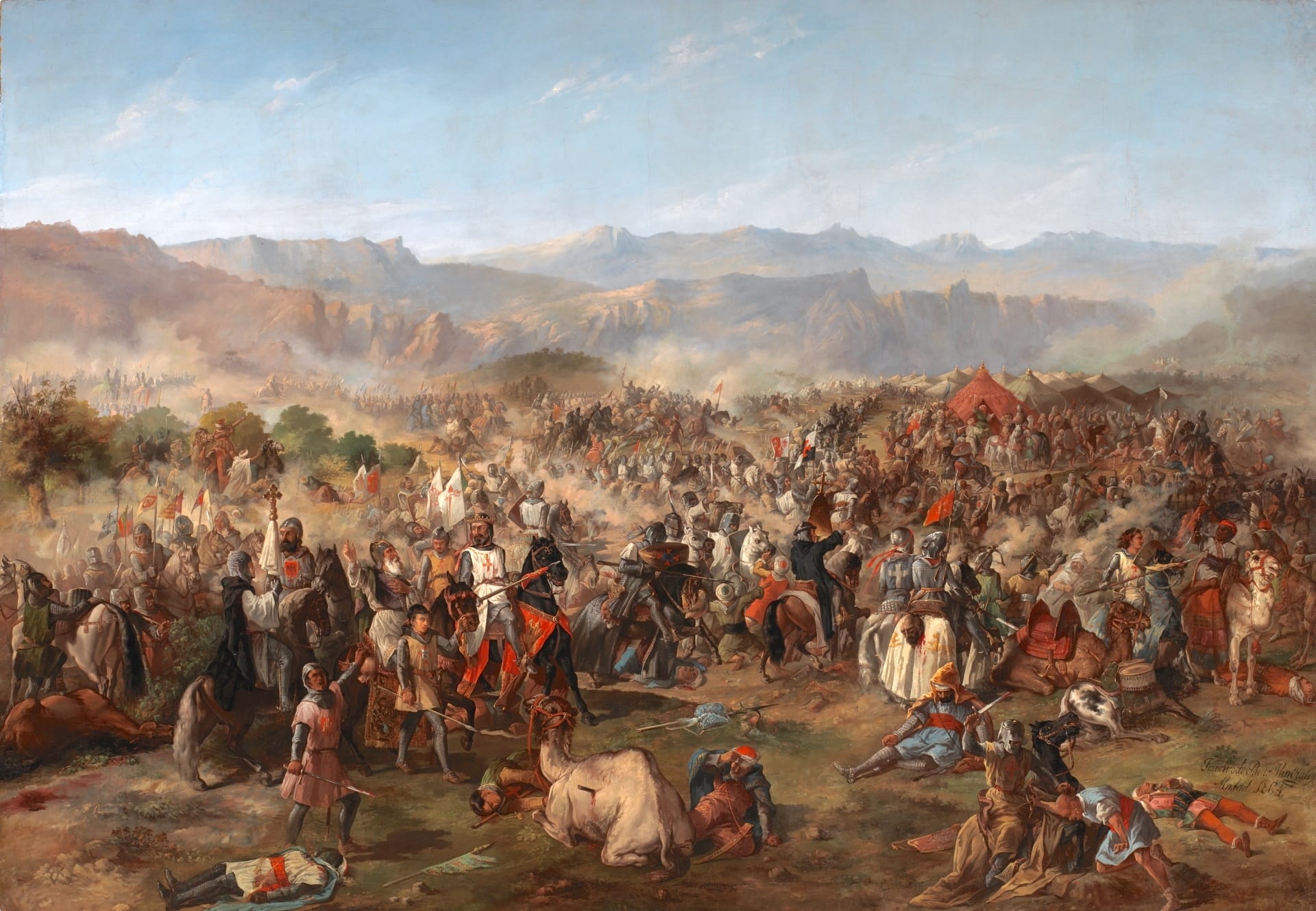
Despite being besieged by Castilian and Aragonese forces, the fortified Muslim stronghold of Granada managed to withstand attacks for over two centuries. The political astuteness of Isabella, heiress to Castile, and her marriage to Ferdinand, heir to Aragon’s throne, led to the eventual unification of both kingdoms in 1479. With the conquest of Granada being the final obstacle to a unified Spain, the Catholic Monarchs meticulously laid siege to the city until its surrender in 1492.
On the historic 1st of January 1492, Ferdinand and Isabella, adorned in elaborate Moorish attire, ceremoniously entered the Alhambra Palace and claimed the keys to the city, signaling the defeat of the last Islamic stronghold in Spain. This significant event marked the conclusion of a remarkable chapter in history, symbolizing the end of an era in Spanish society.
After the Reconquista
During the Reconquista, the Catholic kingdoms embraced a more inclusive approach towards Muslims, exemplified by Alfonso X of Castile, who proclaimed himself as the King of the Three Religions. This era saw a significant translation movement, where classical Arabic works on various subjects like botany, philosophy, law, and medicine were disseminated throughout a burgeoning Renaissance Europe. Amid this intellectual exchange, Jews, Muslims, and Christians coexisted, intertwining their cultures through intermarriage and mutual enrichment of art and knowledge.
Post-Reconquista, there was a shift towards religious intolerance as Granada fell and Spain consolidated under a unified monarchy. The Catholic Monarchs, in 1492 and 1502, issued decrees offering their Jewish and Muslim subjects a stark ultimatum: embrace Catholicism, leave the country, or face severe consequences. Subsequently, a significant number were forcibly converted, and a substantial quantity of Arabic manuscripts were destroyed.
Despite the oppressive measures, some individuals practiced their faith clandestinely, risking persecution by the Spanish Inquisition. Operating not only within Spain but also in its territories and colonies, the Inquisition aimed to identify and eradicate heresy among converted Catholics. Punishments varied from public repentance to execution by burning, with many losing their homes and livelihoods.
In 1567, King Phillip II escalated the suppression by banning the use of the Arabic language and prohibiting Islamic practices, attire, and customs. This intensified when King Phillip III ordered the expulsion of all Muslims from Spain in 1609. Pressured by external threats like Ottoman raids in North Africa and internal conflicts, the Spanish Empire opted for a systematic removal of Muslims from the land, culminating in the expulsion of 250,000 individuals within a decade, directing them to North Africa. Noteworthy is that the majority expelled were indigenous Iberians, akin to their Christian compatriots, who had embraced Islam, emphasizing a shared cultural history.
Despite these mass conversions and expulsions, Spain’s Moorish heritage endures in its linguistic traces, culinary delights, and architectural marvels like la Giralda, the Mezquita of Cordoba, and the Alhambra Palace in Granada, serving as poignant reminders of Al-Andalus’ legacy. The Christian fascination with this cultural legacy persisted even after the Muslims were expelled, preserving much of the rich heritage alive in Spanish culture till today.
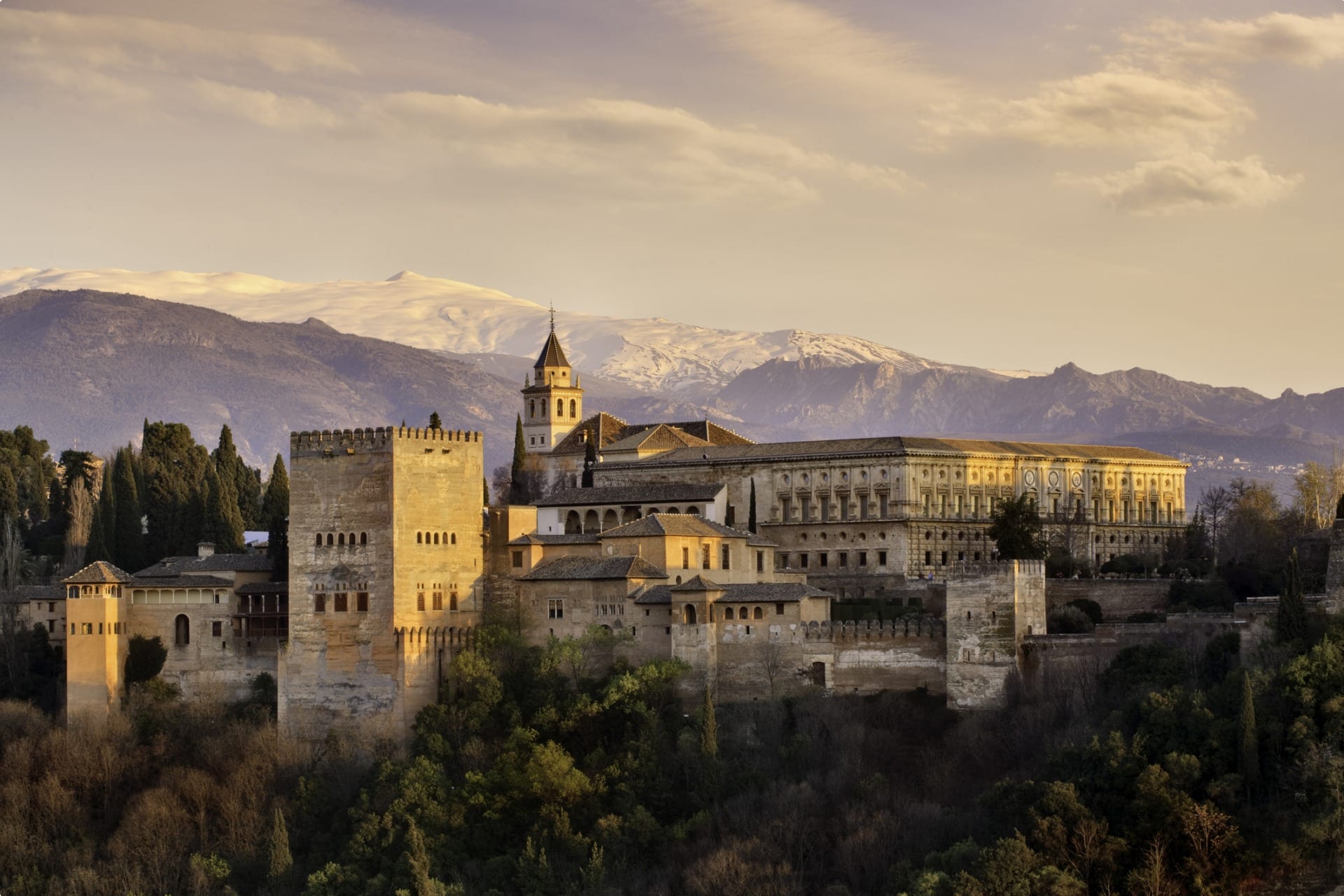
Moors in Spain Tour
Explore the enchanting Moorish past of Southern Spain on Odyssey Traveller’s exclusive 17-day Moors in Spain Tour . Delve into the rich legacy of the Moors in Spain, led by your knowledgeable tour director, as we unravel the remnants of their religious rule, vibrant culture, exquisite art, and captivating architecture. Commencing our journey in the vibrant Spanish capital of Madrid, we will then venture southwards to Toledo in Castilla-La Mancha and various cities in the picturesque Andalusia region, renowned for its breathtaking landscapes.
Despite their eventual downfall and expulsion from the Iberian Peninsula during the 15th-century Reconquista, the Moors in Spain left an indelible mark on the country’s history. Their profound influence on our Spain tour is evident in the enduring citadel ruins perched atop hills, the ancient quarters of cities, and the bustling bazaars that continue to infuse vibrancy into the Iberian Peninsula. These sites offer invaluable insights into modern-day Spain as we traverse from central to Southern Spain and the scenic Mediterranean region.
This small group tour will be escorted by an Odyssey Program Leader, the tour director and a local tour guide who will impart their knowledge about the places we will visit. Odyssey Traveller has been serving global travellers since 1983, conducting educational tours with small groups of mature and senior travellers. Group size is typically between 6 to 12 people who are couples and solo travellers. The cost of the tour is inclusive of all entrances, tipping, and majority of the meals. On this tour we will dine in local restaurants and go on a wine tour to enjoy Spain’s regional cuisines and rich wine culture.
This tour is only one of many Spain and Portugal tours for mature and senior travellers offered by Odyssey Traveller. Our other popular tours of the Iberian Peninsula include our:
- Small Group Guided Tour of Spain and Portugal (24 days)
- Discover Spain Tour (21 days)
- Short Spain Tours (11 days)
For more information about our tours, click here, and you can head to this page to make a booking.
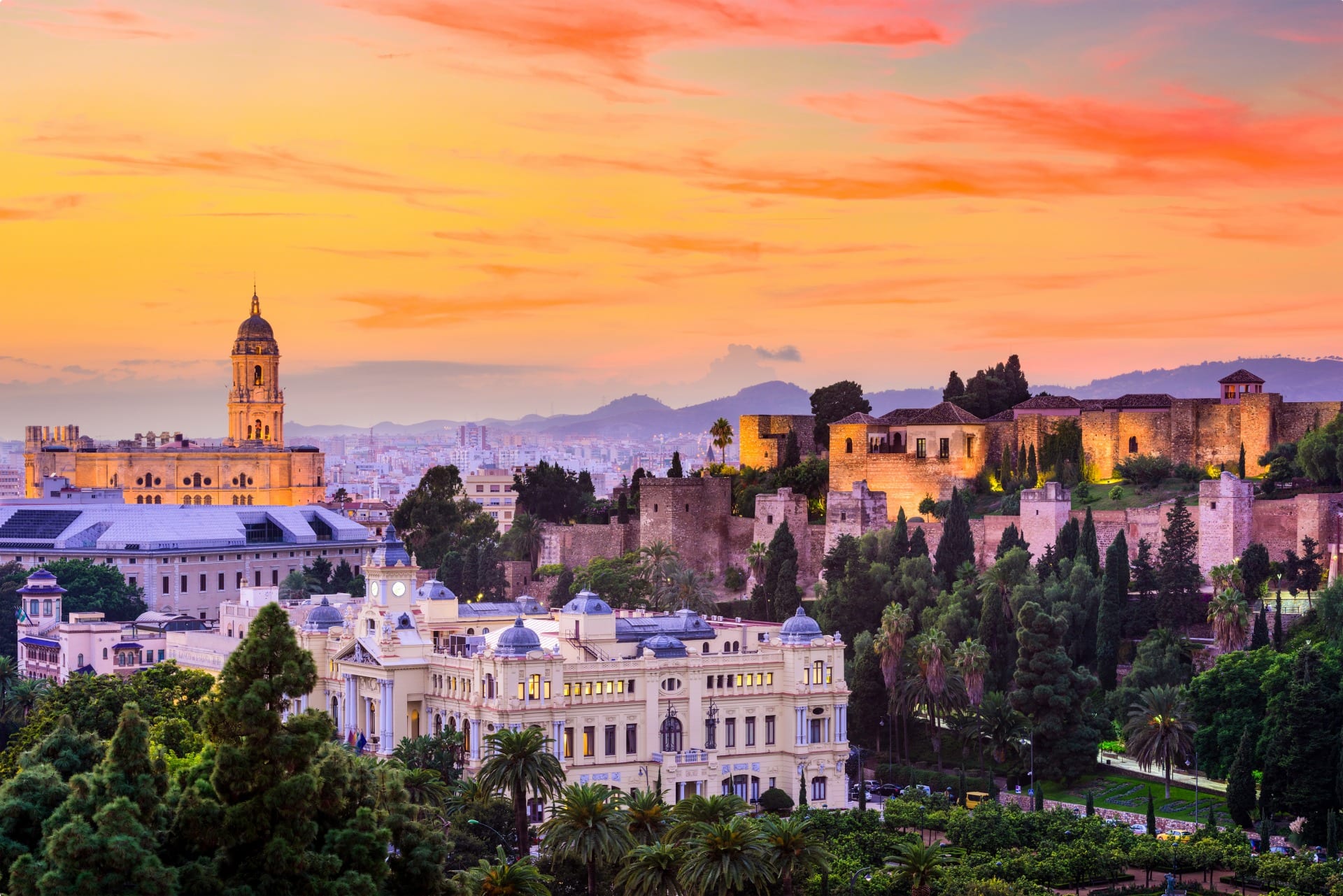
Articles by Odyssey Traveller to help prepare for Spain Small Group Tour for Seniors
The following list of articles published by Odyssey Traveller for mature aged and senior travellers to maximise their knowledge and enjoyment of Spain when visiting;
- Questions About Spain
- 15 of the best places in Spain to visit.
- Travel notes for Barcelona
- Ten of the best books published on Spain
- Ten of the Best art galleries in Europe to visit.
- Discovering Spain (and Portugal )
External articles to assist you on your visit to Spain
Related Tours
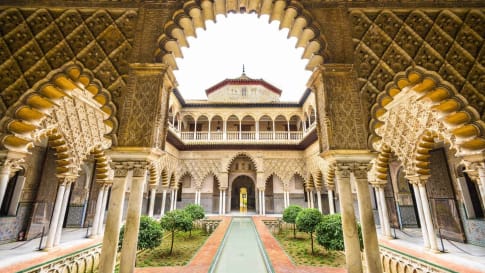
17 days
Mar, OctMoors in Spain
Visiting Spain
A small group tour of Spain exploring Spain's Moorish past. Your tour leader discovers and traces of the art, architecture, and culture and religious reign and of the Moors in Spain visiting their key cities of Madrid, Toledo, Seville and the cities of Andalusia.
From A$15,100 AUD
View Tour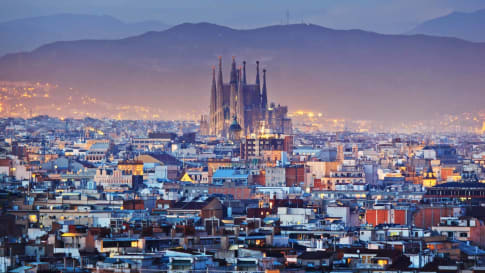
21 days
Sep, MayDiscover Spain
Visiting Spain
Join this small group travel, 21-day tour of Spain. For couples or solo traveler with minimal single supplement has daily itineraries with local guides that provide authentic experiences for those who seek small group journeys. Escorted tour begins in Madrid, finishes in Barcelona.
From A$14,750 AUD
View Tour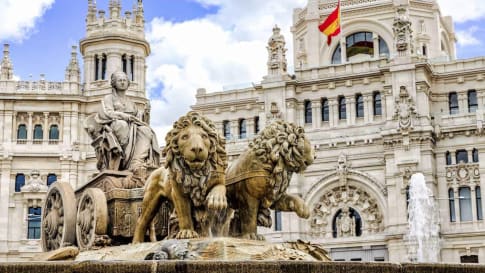
11 days
Sep, Apr, AugShort Spain Tour for senior and mature travellers
Visiting Spain
Join our small group guided tour of Spain, exploring this fascinating country over 10 nights with like minded people. We start in Barcelona and make our way slowly towards Madrid. Enjoy the food and culture while learning about the history of each location from our expert local guides and Odyssey Program Leader.
From A$7,610 AUD
View Tour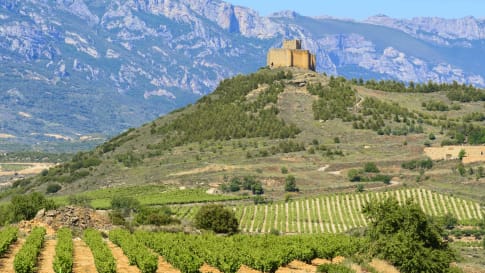
24 days
Apr, Oct, MarSmall Group Guided Tours of Spain and Portugal
Visiting Portugal, Spain
Our program explores the lands of Spain and Portugal, two countries bound by many centuries of history reflected in their modern cultures. Divided by history and language, contiguous neighbours Spain and Portugal were once host to gigantic empires that still bear their languages and lifestyles. A small group tour for couple and solo travellers.
From A$16,225 AUD
View Tour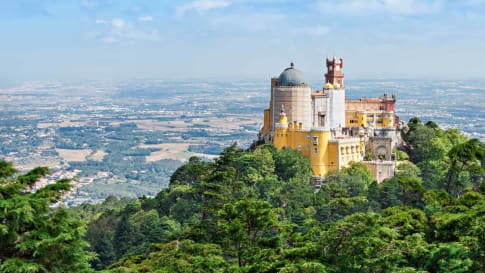
18 days
Aug, AprDiscover Portugal
Visiting Portugal
Join Odyssey Traveller small group journeys with like minded people on this immersive 18-day escorted tour of Portugal. This travel experience takes us from the capital of Lisbon, through Portugal's many historic cities and key UNESCO World heritage sites.
From A$11,275 AUD
View Tour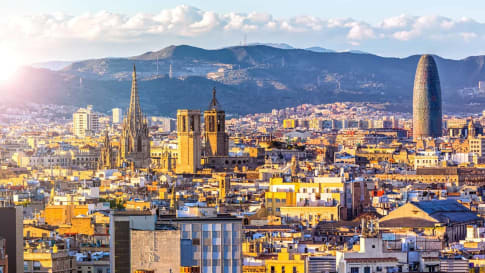
21 days
Apr, Sep, AugBarcelona Small Group Tour | The city explored in-depth
Visiting Spain
Small group journeys from one of the best small group tour companies Europe that delve into Barcelona's history, culture, and cuisine. Daily itineraries for couples and solo travellers with like minded people. An escorted tour of Barcelona based in an apartment with local guides sharing authentic experiences and knowledge.
From A$12,925 AUD
View TourRelated Articles
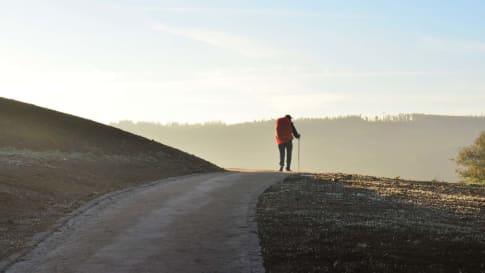
Ancient Routes, Fresh Eyes: European Pilgrimage Routes for the Modern Traveller
Ancient Routes, Fresh Eyes: Nine European Pilgrimage Routes for the Modern Traveller The word ‘pilgrimage’ or ‘pilgrim’ comes from the Modern French word pèlerin, which means ‘foreigner, stranger’, highlighting the concept that the faithful is not of…
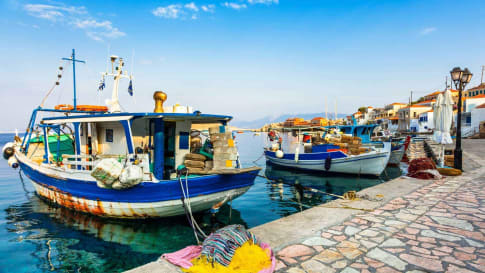
Empires Crossing the Mediterranean: 1130-1300
As a sea connecting continents and stretching from the Atlantic Ocean in the west to Asia in the east, the Mediterranean has for centuries been a centre of trade and exploration.
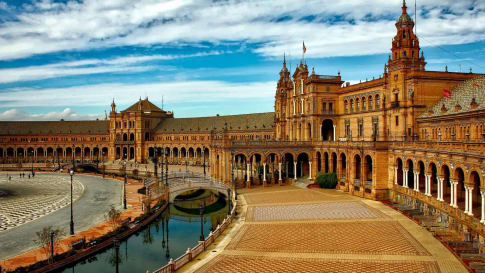
Highlights of Seville
Seville is a lively and disarming city, and a popular tourist destination in Spain.
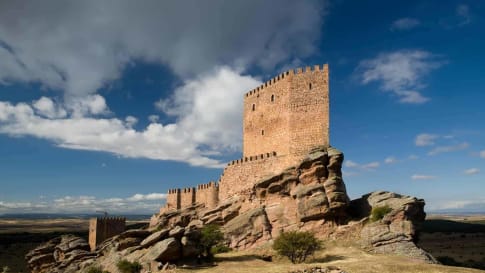
History & European Pilgrim Walks
History & European Pilgrim Walks Walking pilgrimages provide solitude and tranquillity in an increasingly busy and fast-paced world. These walking tours follow ancient pilgrimage routes, giving the modern pilgrim the chance not only to meet new…
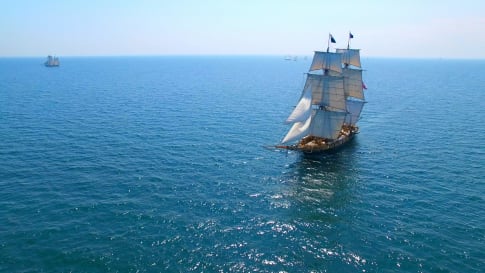
Spanish Exploration and Conquest of the Americas
An Antipodean travel company serving World Travellers since 1983 with small group educational tours for senior couples and mature solo travellers. Article summarizes the Spanish explorers and the race against the Portuguese for access to the Americas.
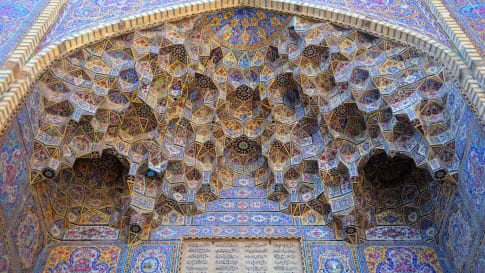
Beauty and Artistry in Iran: The Persian Garden and Persian Mosaic Tiles
Guide to Persian Mosaics and Gardens | Small group tours Iran Beauty and artistry can be seen everywhere in Iran, and its philosophy and religious beliefs are reflected in the country’s public and private spaces.…
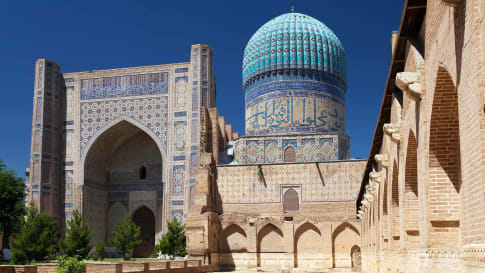
Elements of Mosque Architecture
The word "mosque" often brings to mind not this simple prayer space, but the ornately decorated monuments built by powerful Islamic rulers.
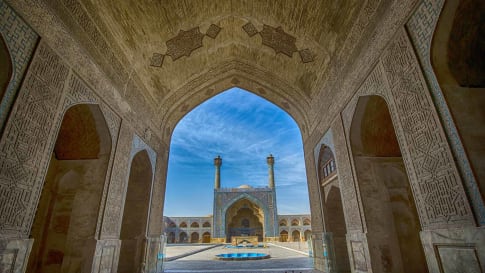
History of Mosques in Iran and Central Asia
During the Islamic period of Iran, glazed bricks were used to create breathtaking and mesmerising wall and ceiling designs in mosques. Click through to read more.
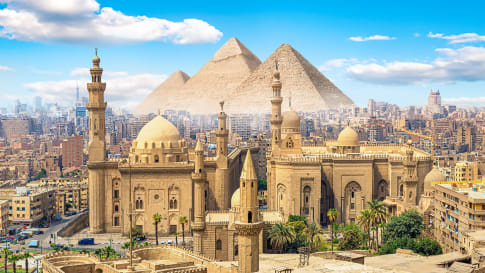
Islam in the Mediterranean
Article discusses the arrival of Islam in Mediterranean region with a focus on Istanbul and Turkey. The relationship to the merchants of Venice and the crusades should also be considered in this period of change. Join a Odyssey Traveller small group educational tour for senior couples and mature solo travellers to learn more.

